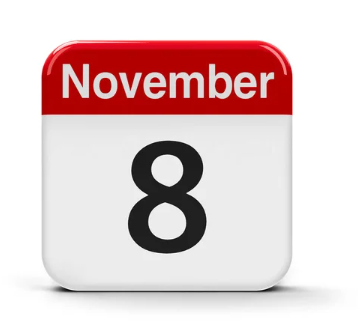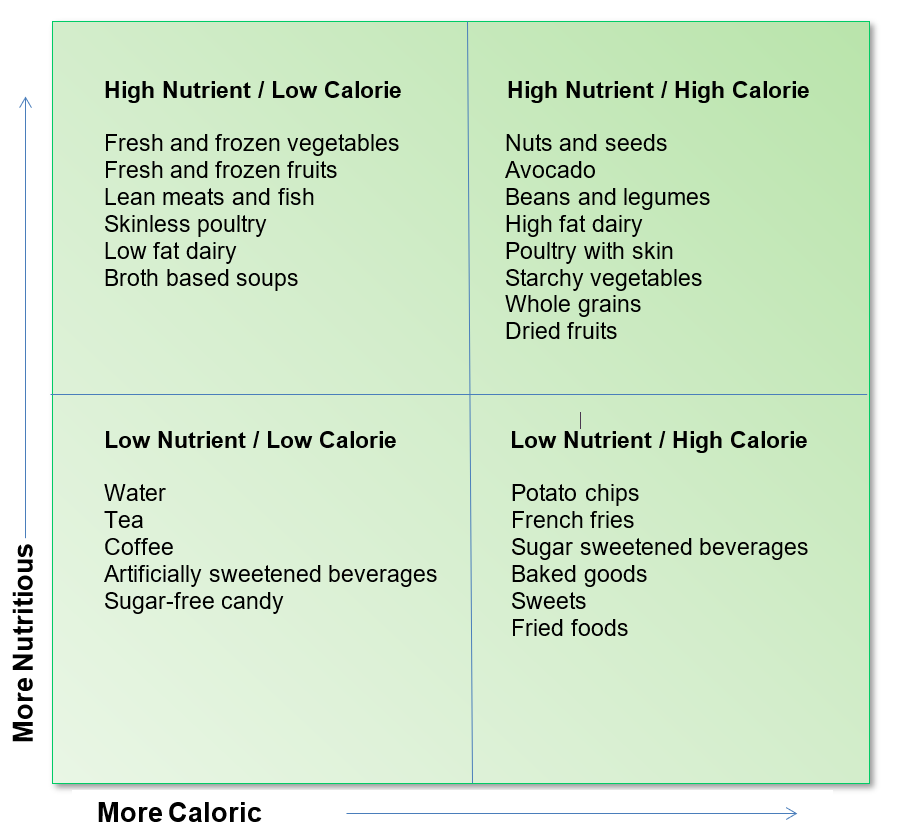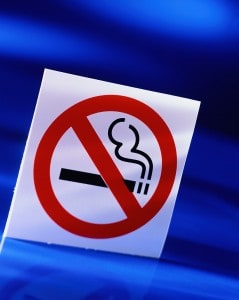Many of you have asked me to weigh in on an approach to weight loss known as Bright Line Eating. Some people claim that this approach has helped them lose weight when all other methods failed.
The approach was developed by Susan Peirce Thompson, who has a Ph.D. in Brain and Cognitive Science and claims that her approach is grounded in cutting-edge psychology and neuroscience. According to promotional materials, Bright Line Eating is “very structured and takes a liberating stand against moderation.”
Instead of “very structured,” I’d describe it as “extremely rigid.” And if the phrase “a liberating stand against moderation,” sounds a bit Orwellian to you, well, you’re not alone. This zero-tolerance approach could be considered “liberating” in the same way that a maximum-security prison might liberate you from a life of crime.
This article is also available as a podcast. Click to listen.
There are four so-called Bright Lines:
Bright Line #1: Foods containing any form of sugar, sweeteners, artificial sweeteners, or concentrated fruit juices are strictly forbidden. Forever. Although it’s not mentioned specifically in this rule, elsewhere in the materials, alcohol is equated with sugar and is, therefore, apparently included in this prohibition.
Bright Line #2: Also forbidden are foods containing any type of flour, including whole wheat flour, and flour made from any other grains, seeds, or nuts. Is it your wedding day? Sorry, no cake for you. This is a bright line.
Bright Line #3: You must eat exactly three meals a day, absolutely no snacking, and no exceptions—not even to check the seasoning of something you might be cooking. Helpful tip: Put a piece of tape over your mouth while cooking to prevent accidental breaches of protocol. (No, I’m serious. This is actually recommended.)
Bright Line #4: You must weigh or measure every single thing you eat, forever. Heading to a restaurant? Pack your scale. There are no exceptions to this rule. The type and amount of food at each of your three meals is strictly dictated and adds up to about 1200 calories a day—a bit more if you are a man but otherwise, it’s one size fits all.
And that’s it: Just follow these 4 simple rules to the letter—forever—and you too can be happy, thin, and free!
I’m being facetious, obviously. (Although that is the subtitle of Dr. Thompson’s book: The Science of Living Happy, Thin and Free.)
And I want to acknowledge that one’s willingness to embrace such a draconian approach will probably depend on the degree of suffering you feel that your weight is causing you. If this approach succeeds where everything else has failed, it’s certainly your prerogative to decide that abiding by these constraints is worth it to you.
But if you are simply curious about how this approach might stack up against other options, I think it’s worth taking a closer look at the scientific rationale.
Does Science Support Bright Line Eating?
Bright Line Eating purportedly “works with the brain” in three specific ways:
1. By reducing your reliance on willpower.
Willpower, they claim, is depletable and unreliable. I agree! Relying entirely on willpower is like trying to parallel park a car without power steering. It’s possible, but it’s a lot of work. Creating solid habits and engineering your environment to reduce temptation and to make the healthy choice the easy choice are great strategies for building a healthier lifestyle.
Read More: Why Willpower Isn’t Enough
What I don’t quite see is how these extremely rigid rules reduce your reliance on willpower. It seems to me that maintaining this degree of restriction on an ongoing basis would require quite a bit of willpower.
The authors also claim that exercising “uses up a tremendous amount of willpower and is not effective as a weight-loss tool.” If you do not exercise, you are encouraged not to start. If you already exercise, you’re encouraged to reduce the intensity of your current regimen.
I agree that the primary benefit of exercise is not weight loss. But I don’t agree that it necessarily uses up a lot of willpower, unless, perhaps, you’re forcing yourself to do exercise that you don’t enjoy. But I’d rather encourage you to explore different ways of being active than discourage you from exercising.
2. By bringing leptin “back on board.”
According to the Bright Line Eating website, following the BLE rules will allegedly “bring leptin back on board so you finally feel satisfied.”
The role of leptin in appetite and body weight regulation is still poorly understood by the actual scientists who study it—and grossly oversimplified and wildly misrepresented in the popular press. Leptin levels are directly related to body fat stores. They drop when you lose weight or when food intake is restricted, which in turn stimulates your appetite. If you gain body fat, leptin levels go up, which decreases the desire for food. It’s the body’s way of maintaining the status quo.
But because it’s popularly known as the “satiety” hormone, people imagine that leptin turns your appetite on and off on a meal-by-meal basis. But in reality, leptin works to regulate appetite and body weight over a longer time frame, not in response to individual meals.
You might also be led to conclude that higher leptin levels would be a good thing. More leptin, less appetite. But people who suffer from obesity tend to have very high leptin levels (because they have high amounts of body fat). The problem is not that their leptin levels are too low but that the body becomes resistant to the appetite-suppressing effects of leptin.
My point is simply that the relationships between leptin, body fat, and appetite are complex and—despite what you read online—not easily manipulated by diet.
In a paper published in Current Developments in Nutrition, Thompson reports that her program’s participants (95% of whom are white women of high socioeconomic status) rate their hunger and cravings lower after following the program for 8 weeks. However, it’s unclear whether this has anything to do with leptin, or how long this effect might persist.
3. By “rewiring and healing the addictive centers of the brain.”
The entire Bright Line Eating philosophy leans hard on the concept of food addiction. The idea that people can become literally addicted to food is highly controversial. Just because the taste of something sweet activates the same area of the brain that lights up in response to cocaine, it does not follow that this creates psychological or physiological dependence. However, telling people that they are chemically addicted to food and therefore powerless to control themselves can become a self-fulfilling prophecy.
Read More: Sugar and the Science of Addiction
Thompson has even invented a quiz that allegedly measures your vulnerability to food addiction. A high score on her “Susceptibility Scale” supposedly suggests that you are unable to exercise restraint and will only be safe by “liberating” yourself from any form of moderation.
Diet or Disordered Eating?
In the end, I find it somewhat ironic that this approach was developed by a psychologist. Because to my eye, it reinforces such psychologically unhelpful—even damaging—beliefs. For example:
- In order to be happy, you must be thin.
- Being thin is more important than anything else, therefore whatever you have to do to achieve this is worth it.
- You are incapable of exercising judgment and self-control.
- You cannot be trusted.
- Certain foods are more powerful than you are.
In my own work as a weight loss coach, we spend a lot of time dismantling many of the beliefs that Bright Line Eating seems determined to instill.
If you buy into the idea that you have some sort of defect that makes it impossible for you to control yourself, this take-no-prisoners approach might seem like your only hope. And, apparently, many people who embrace it succeed in losing weight. But as one former adherent of Bright Line Eating wrote on her blog:
“I was thin but I was far from happy and definitely not free…I [had been] 100% sold on BLE as my forever way of eating [but] I reached a point where peace was more important than pounds.”
If someone came to me for nutrition counseling and described some of the behaviors endorsed in this program (such as taking a scale to restaurants to measure your food or putting a piece of tape over your mouth to prevent yourself from eating), I would probably refer them for evaluation for an eating disorder. Thompson discloses that she herself has a history of eating disorders including bulimia and binge eating. But the solution that she advocates still has many of the hallmarks of disordered eating, such as extreme inflexibility and black-and-white thinking.
Read More: A Dietitian’s Review of Bright Line Eating
As anyone trained in the treatment of eating disorders knows, achieving a healthy weight does not necessarily mean that you have recovered from disordered thoughts about food (or about your body).
That’s my take on Bright Line Eating. No doubt, it will rub some people the wrong way. It’s certainly not my intention to undermine anyone who feels that Bright Line Eating is making their life better. But, if you’d like to experiment with a (really) different approach, check out the Weighless Mindset Reset, a free 7-day minicourse that I developed with Brock Armstrong, in which we investigate some of those underlying beliefs.
Originally published at QuickanddirtyTips.com


 The next
The next 
 Q. I have a friend who just quit smoking. He’s started to gain the typical weight and went into his local GNC yesterday to get some supplement that’s supposed to speed up his metabolism. He already has a fairly good diet. I told him he might be better off just letting his metabolism balance itself out, rather than substituting one stimulant for another. Any ideas on how he can naturally adjust better?
Q. I have a friend who just quit smoking. He’s started to gain the typical weight and went into his local GNC yesterday to get some supplement that’s supposed to speed up his metabolism. He already has a fairly good diet. I told him he might be better off just letting his metabolism balance itself out, rather than substituting one stimulant for another. Any ideas on how he can naturally adjust better?